Jordan Schakel: Shooters Shoot
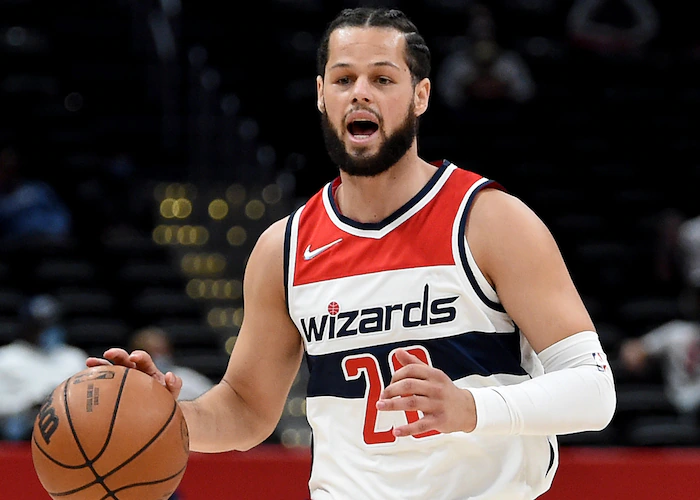
Credit: ESPN
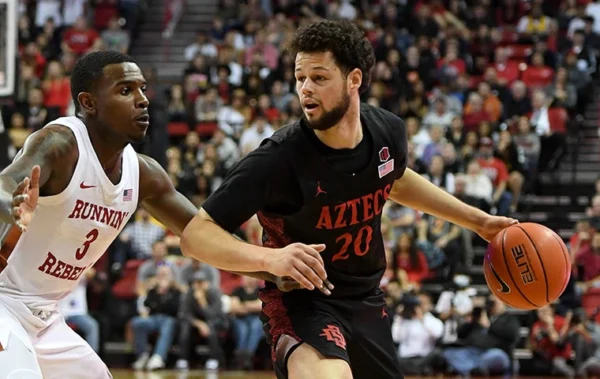
As a society, we tell our children to dream big and aspire to greatness. Messages like “you can do anything you set your mind to” are intended to inspire the next great doctor, politician, entrepreneur, or philanthropist. Despite the older generation’s best intentions, when young people in our culture hear this advice, they usually imagine themselves as celebrities – rock stars or social media influencers. More than any career, children want to be a professional athlete.
The trouble with this aspiration, as their elders know through experience, the odds of starring on the biggest athletic stages, is one in a million.
The chances of a child developing into the next Tom Brady, Lebron James, or Fernando Tatis is astronomical, but even making it into a professional league is a near impossibility. The odds of making it to the NBA, for example, are 1 in 3333 or 0.03%.
Many players that make it to the league are athletically gifted or had a father that played professionally or were ranked as a five-star athlete coming out of high school.
The athletes that were not gifted an advantage must find their own way to defy the odds. They must home in on their craft and excel in an area that makes them stand out from the millions of other players around the world.
Former San Diego State Aztec Jordan Schakel, at an early age, realized the three-ball was his best chance to earn a paycheck playing the game he loves.
In college, he was an elite three-point shooter. He shot well over the 40% mark in each of his final three seasons at SDSU. Though the NBA line is two to three feet further away, he made 74 of his 212 attempts (34.9%) last season with the Washington City Go-Go.
Aztec fans and opposing coaches would agree: Schakel is a marksman. He is going to keep shooting from deep until he accomplishes his goals.
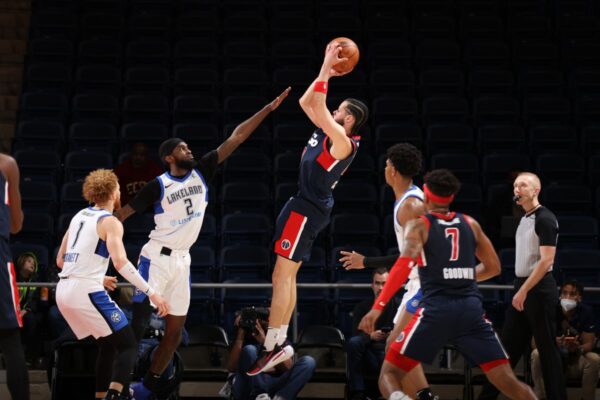
The NBA is taking notice, and Schakel is being rewarded with the fruits of his labor. But getting to the league is one thing, staying there is another.
“It has been a blur, but it has also felt like years at times,” Schakel said on an upcoming episode of the SDSU Basketball podcast. “It was good this year, I learned so much, and I’m so thankful.”
Finding consistent success at the world’s highest level can be a tremendous challenge. Kawhi Leonard is an anomaly. Most former Aztecs have had an uphill battle in the NBA. Randy Holcomb, after two tremendous seasons on the Mesa, was taken by Chicago with the 57th pick in the 2002 draft. He played in only four games for the Bulls. Jamaal Franklin was drafted 41st overall by Memphis but only played in 24 NBA games before bouncing around leagues and finding a successful career in China. Xavier Thames was drafted 59th overall but never played in the NBA. Jalen McDaniels, drafted 52nd by Charlotte, has earned a role with the Hornets during his three seasons.
Malachi Flynn is the best example of the difficulty of staying in the NBA. After leading the Aztecs to a 30-2 record and winning Mountain West Player of the Year, he was selected 29th overall. One of three Aztecs all time to be drafted in the first round, he has struggled to find consistent playing time in his two professional seasons.
A year after Flynn was drafted, Schakel finished his time with the Aztecs. In his senior season, he improved in every category from his previous years, averaging 14.4 points and shooting a blistering 46% from three.
After going undrafted, he played in the NBA Summer League. This opportunity was critical for Schakel’s chances of being noticed by coaches, scouts, and general managers. He played alongside dozens of other athletes fighting for the same spotlight.
He played for the Warriors and Kings, but it was an east coast G-league team that came calling. The Capital City Go-Go’s.
“I always wanted to be in the NBA, and I felt like the G-league gave me the best shot,” Schakel said. “I had talked to the coach beforehand, and I just felt like that was the best decision, the best spot. Over the phone, I could tell they valued me and what I brought to the table.”
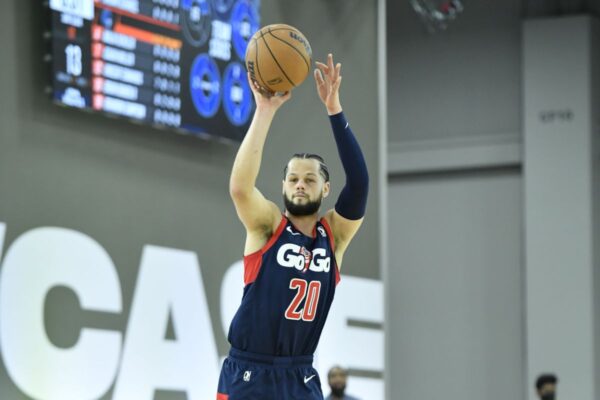
The California native found himself on the opposite side of the country, continuing to reach for his NBA dream. He missed the west coast.
“Last year, I didn’t do too much,” Schakel explained. “I’d go out and have fun at night like guys do. But I was kind of so busy that I really didn’t have too much time to meet new people and do anything like that. But I got to see some of the museums in DC. All the monuments and stuff are cool. Just being able to tour and play different teams on the east coast and see cities out there just made me appreciate San Diego that much more. I can’t even explain how much I fell in love with San Diego and even the whole state of California. I saw all that stuff on the east coast… we have it great, I’ll say that.”
But Schakel did not finish college to sight-see a new location to live. He is pursuing basketball.
He found success with the Go-Go, and he immediately noticed the nuances between college basketball and the professionals. He liked the pro game more.
In the NCAA, there is no defensive three-second violation. With defenders camping in the paint, it is difficult for the offense to run plays and make the correct reads. The clear lane to the basket allows the more athletic NBA players to get into the paint and collapse the defense. This leaves more space for shooters.
“It ends up being that if you run your plays and execute the way you are supposed to, you are going to get an open shot,” Schakel said. “There is no getting locked up. You see guys getting open shots all the time. It’s just a matter of making them and knocking them down. I like that a lot more. It suits my skill set being a shooter. Not have to force myself into a crowded paint with more athletic guys. I can just play my game, get open, they screen for me, stuff like that.”
The NBA has evolved into a three-point shooting league. Mid-range jumpers are considered analytically incorrect, and players will pass up open two-pointers to find a teammate for a three. Three-point specialists, like Schakel, are valued more than ever.
On Christmas week, two months into the G-league season, the Wizards saw Schakel’s value and gave him his first opportunity in the NBA.
He was given a 10-day hardship contract. Essentially a prove-it deal, where all the pressure is on in the limited minutes a player gets, Schakel was likely headed back to the Go-Go no matter how he performed on the court.
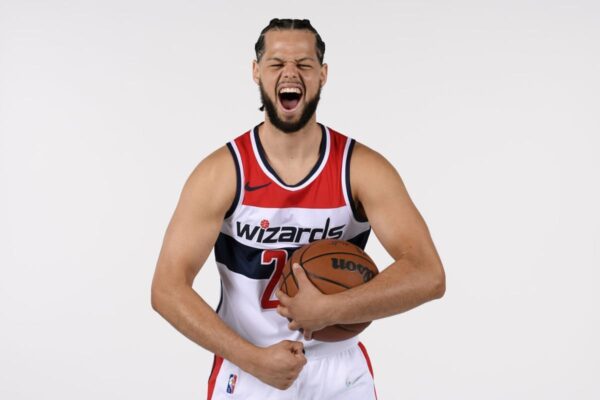
During his 10-day stint, he played in only two games but, in his brief time on the court, fired away. He is a shooter, and shooters shoot.
His first NBA game was against the Philadelphia 76ers. He played nine minutes and went 0-for-6 from the field. To put that into perspective, in his final three seasons with the Aztecs playing more minutes, he was held without a made field goal only seven times. He never took more than four shots in any of those games.
“I got in at the start of the fourth quarter,” Schakel said when asked about his first game. “I was ready, but I was like, ‘wow, I’m coming in off the bench cold.’ I wanted to just look at the film and be like, ‘alright, I wasn’t scared.’ I can live with a missed shot, but I let it fly. I don’t want to put too much pressure on myself, so as long as I go out there and let it fly and do my thing, I can live with the results.”
“Looking back, I don’t think I was nervous or scared of the moment. I just think I missed shots. I was proud of myself that I just kept shooting. I was glad that I took those six shots because it always takes some time and adjustment before you get the hang of it. I’m glad that I went 0/6 and not 0/2 and stopped shooting.”
Shooters shoot.
Schakel kept shooting, and he continued to believe in himself until finally, the Wizards came calling again.
With a month left in the season, Schakel signed a two-way contract. This gives him the ability to play on either the Wizards or the Go-Go when he is needed. Signing this contract does not guarantee an NBA career as it pays half of the NBA’s minimum salary, and he can be cut at any point. But it gives access to the NBA facility and team, and it is the next step toward the NBA dream.
“I couldn’t believe it,” Schakel said, delighted. “It was at the end of the year, and I worked so hard. I felt like I always believed in myself but it’s always different when you actually do see it come true. It’s always a moment of wow. I really did it. All the work paid off for a reason.”
When Schakel was given his next chance on an NBA floor, he was determined to score regardless of the circumstances.
The night he made his first NBA basket was a home game against the Knicks. He lost a playoff game with the Go-Go the night before, a game where he left everything on the floor, scoring 22 points. With no sleep, he flew back to Washington to seize his lifelong dream.
“I was just laughing to myself,” Schakel said. “This is crazy. I’m exhausted, I just lost a playoff game, and now I gotta play up. I was just playing 16U, and now I gotta go play 17U against the big guys, and I’m tired. The same type of thing (as his first game), I get in, in the fourth quarter. I missed my first three and made my second one. I also got fouled and made my two free throws. I felt more a part of the game, and it was easier. The starters were out there for the Knicks. So, it wasn’t like they put guys like me in yet. So, I felt like I got a bucket when it counted, if you ask me.”
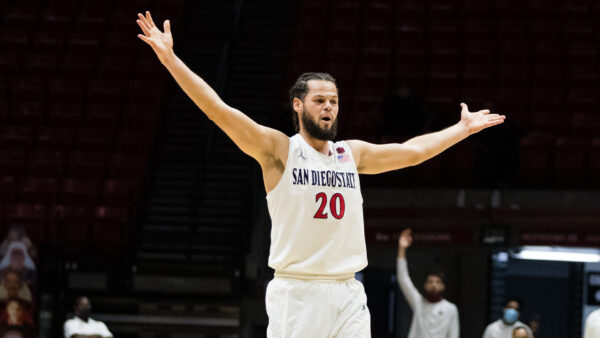
For everything he endured, the bucket absolutely counted.
Schakel has defied the odds. He is one of the .03% who has made it to the NBA. He will do everything in his power to stay in it.
“I just want to keep getting better, see myself to the fullest potential,” Schakel said. “I’ve already tasted a little bit, but I felt like I can be here to stay… I have a lot of goals for this offseason. Everyone wants to see you faster and stronger, but I feel like that comes if you just keep working. I really want to work on my finishing… Being able to handle the ball in pressure in different situations and playing against older guys during the summer. Learning from those guys, especially LA has a lot of good veteran guys that they are willing to mentor.”
Schakel is busy, and his life is engulfed in basketball. But he still finds time to make it back to San Diego. He said he has seen Keshad Johnson and Lamont Butler twice now and is amazed by their growth as players. He feels older, having a diploma over his younger college teammates, but his experience serves as an opportunity. SDSU players, who are pursuing playing basketball professionally, can learn a lot from Schakel’s hectic first season away from the Mesa.
[wpedon id=”49075″ align=”right”]
He had a piece of advice for his college teammates, but it can apply to anyone – take advantage of the offseason.
“I feel like in the summer, you really need your time away from the coaches, away from eyes on you all day, every day,” Schakel said. “You need to be able to make mistakes, go live and mess up. You have to mess up to learn and get better.”
Schakel lives by this, and it is the reason why he has defied the odds. If you miss or make a mistake, just keep shooting.
Why? Because shooters shoot.
Class of 2022 at San Diego State University. Communication major and pursuing a sports journalism profession. Season ticket holder of the SDSU MBB team since 2011. Fondest memory of Viejas Arena is Aztec legend, Dwayne Polee sparking a 19-1 run over New Mexico to win the MW Conference in 2014.